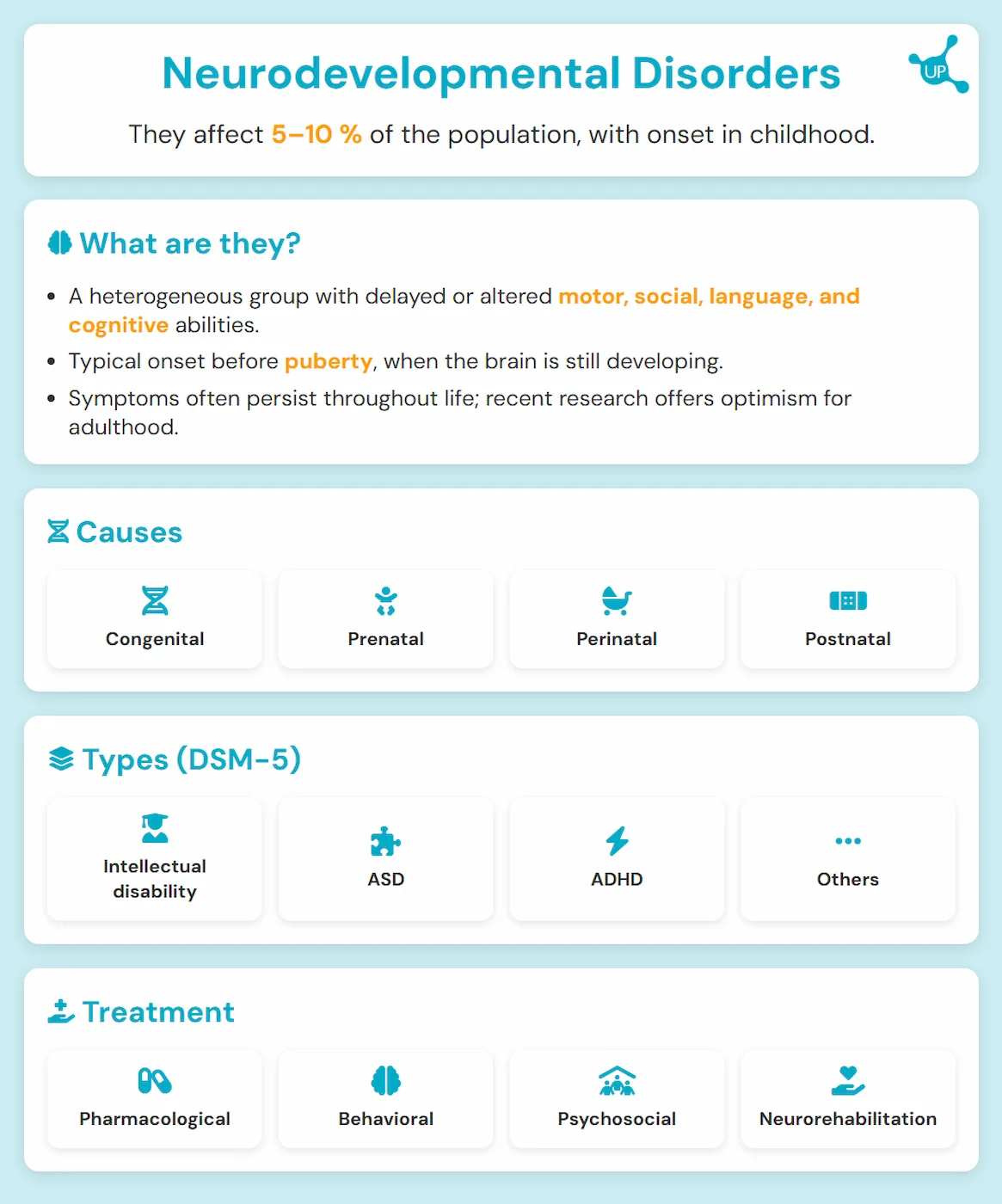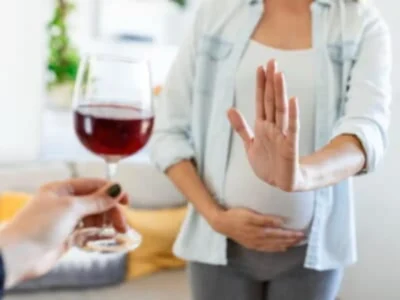Neurodevelopmental disorders affect between 5% and 10% of the population, with a typical onset in childhood and before puberty, a period in which the brain is still developing.
Any factor that alters the complex process of brain development can cause the individual not to exhibit a typical neurological development.
In a significant percentage of cases, the manifestations of the disorder persist throughout the person’s life. However, recent research suggests there are reasons for optimism regarding the treatment of some neurodevelopmental disorders in adulthood.
What are neurodevelopmental disorders?
Neurodevelopmental disorders are “a group of heterogeneous conditions characterized by a delay or disruption in the acquisition of skills across a variety of developmental domains including motor, social, language, and cognition” (Thapar, Cooper and Rutter, 2016).
The great diversity within neurodevelopmental disorders is reflected in the fact that some affected individuals show specific deficits that do not prevent them from having an independent and fulfilling life. For example, difficulties maintaining focused attention.
Others, however, will require lifelong support to survive, because they do not develop the basic skills necessary for independent living. For example, the ability to walk or feed themselves.
What causes a neurodevelopmental disorder?
Various factors can affect normal brain development, although in many cases the etiology is unknown. Causes can be classified as:
- Congenital, for example, genetic mutations or metabolic disorders.
- Prenatal, such as nutritional deficiencies or maternal infections.
- Perinatal, for example, those arising from complications during birth, especially lack of oxygen (hypoxia).
- Postnatal, referring to factors such as traumatic brain injuries, infections like meningitis, or exposure to environmental toxins after birth.

Types of neurodevelopmental disorders
The Diagnostic and Statistical Manual of Mental Disorders in its fifth edition (DSM-5) includes the following within neurodevelopmental disorders:
Intellectual disability
Intellectual disability is characterized by global impairment of cognitive processes to such a degree that it prevents the individual from attaining the skills necessary to perform tasks expected for their age. For example, adequate mastery of language or executive functions.
Autism spectrum disorder (ASD)
ASD manifests as difficulties establishing effective social communication, repetitive behavior patterns, and very restricted interests.
Attention deficit hyperactivity disorder (ADHD)
With an estimated prevalence in some studies of 3% to 7% in childhood and 4.4% in working-age adults (Michielsen et al,2012), attention deficit hyperactivity disorder presents with difficulties in maintaining attention and/or hyperactive and impulsive behavior.
Other neurodevelopmental disorders included in the DSM-5:
- Specific learning disorders
- Communication disorder
- Global developmental delay
- Unspecified intellectual disability
It is important to bear in mind that more than one neurodevelopmental disorder can be present in the same person. For example, within ASD there is a high prevalence of ADHD and also of intellectual disability.
Treatments for neurodevelopmental disorders
Treatment of neurodevelopmental disorders will largely depend on the type of disorder and the predominant symptoms in each case.
They can essentially be divided into pharmacological therapies and non-pharmacological therapies, the latter being the ones that currently offer the greatest number of options.
Non-pharmacological therapies include behavioral interventions, psychosocial support, and neuropsychological rehabilitation, among other options that stimulate the skills the child has not adequately developed. They also provide the necessary supports to live a full and meaningful life.

If you enjoyed this post about neurodevelopmental disorders: concept, types and treatment, we recommend you take a look at these posts:
“This article has been translated. Link to the original article in Spanish:”
Trastornos del neurodesarrollo: concepto, tipos y tratamiento







 Exercises to Develop Children’s Reasoning: Practical Activities
Exercises to Develop Children’s Reasoning: Practical Activities
Very clear information! I just started studying clinical psychology and I find these topics interesting with information so clear and accessible to all to learn about these issues.
Thank you very much !!!!